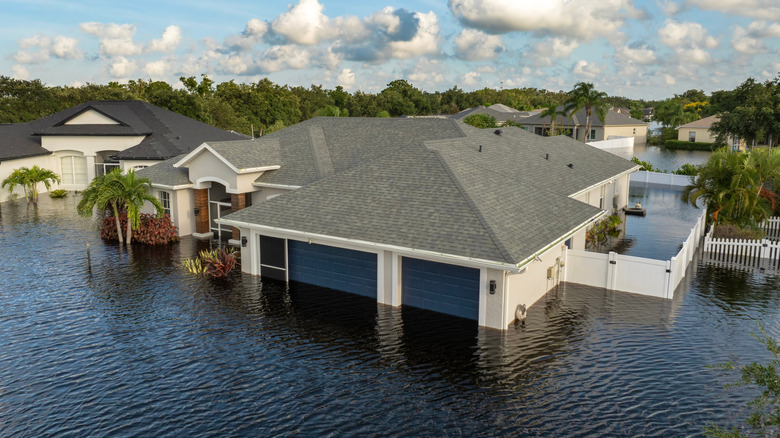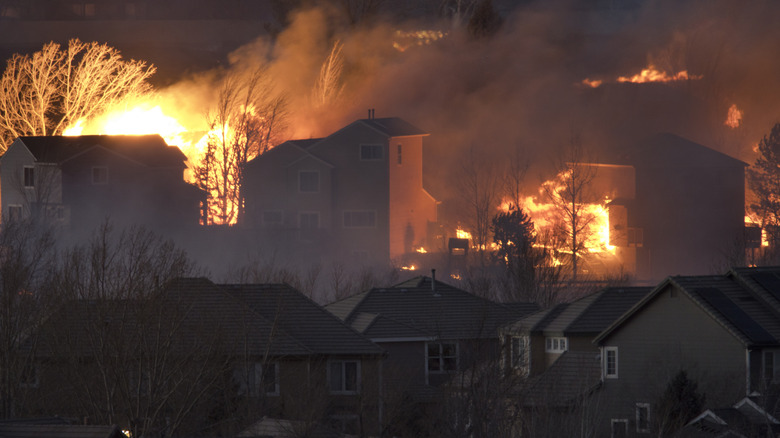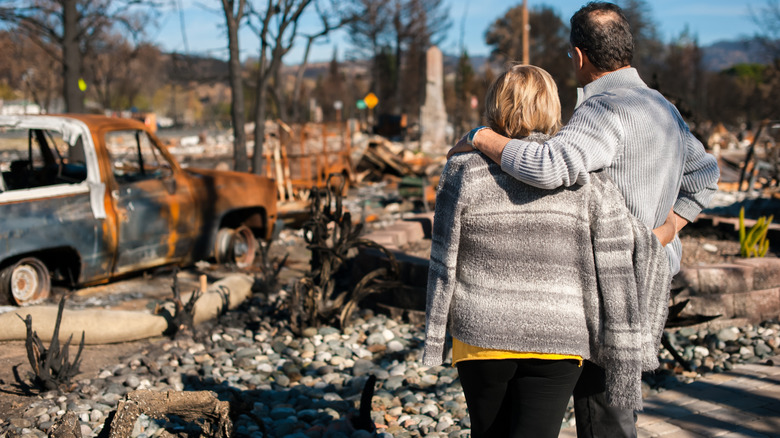Climate Change: Is Your Home At Risk? Here's How To Find Out
Every time you check the news, there's another extreme weather-related disaster wreaking havoc somewhere in the world. Fires, floods, and intense storms such as hurricanes and tornadoes are among the most common of these events. While some areas were much more prone to severe weather danger to begin with, though, the overall risk level is quickly rising in many places due to climate change. This includes much of the United States. According to a report by the National Oceanic and Atmospheric Organization (NOAA), 2023 was a historic year for climate change impact in the U.S., with 28 weather disasters totaling almost $100 billion in damages. Saying that many people have lost their homes to climate change is an understatement.
What about your home, however? Have you worried whether you're in a risky area, but been unclear on how to find out? With a few public tools at our disposal, it's easier to more accurately assess one's own personal risk.
Climate change causes a number of issues that can affect your location's safety. First off, there's extreme precipitation caused by stronger storms; there's also wildfire risk because dryer vegetation is more flammable and fire seasons now last longer; drought due to increased evaporation and reduced snowpack; and coastal and inland flooding caused by sea-level rise, increased precipitation, and other factors. Learning how to accurately assess these dangers in your area is an important factor to take into consideration whether you own, rent, or are getting ready to purchase a home.
Tools to navigate property risk due to climate change
Even if you live in an area that has historically been free of extreme weather fears, you should reevaluate your risks. Cities and suburbs face increasing wildfire danger and many beachside homes are now in harm's way. When assessing a home's risk, there are many tools available to help navigate this new terrain. Risk assessment maps, such as the FEMA National Risk Index and the U.S. Climate Vulnerability Index, are user-friendly ways to gather data. Simply click on the map to see how your area scores in several areas including extreme cold, wildfires, or coastal flooding. Climate Check is similar but has you enter a zip code to receive a report related to potential risks. While these maps can be helpful, they're not predictive of future events and climate trends, nor do they show you events that have taken place in that area in the past.
The housing app Zillow is trying to take those shortcomings into account by offering even more comprehensive climate risk assessments after noting that 80% of home buyers are now looking for this information. In a September 2024 press release, Zillow's chief economist Skylar Olsen says that providing buyers and sellers with this type of data is highly relevant. "As concerns about flooding, extreme temperatures and wildfires grow [...] this tool helps agents inform their clients in discussing climate risk, insurance, and long-term affordability." Zillow is including interactive maps, climate risk scores, property insurance requirements, and historic insights detailing past climate events. Some of these features are already available on their site, but full rollout is expected by early 2025.
The high cost of climate change
In addition to nifty online tools, it's also wise to ask realtors or sellers about a property's history, or do a permit search online to see if a home has been rebuilt or damaged. In many states, sellers and landlords are not required to disclose the property's full history.
Meanwhile, it's worth recognizing that — when you look at all of the expensive disasters overtaking the news each year, put together — this all boils down to one universal truth: Insurance companies are passing on the costs to renters or property owners. Most private insurance covers wildfires, but oftentimes flooding is not included. If property owners fail to purchase flood insurance, they may be underinsured and out of luck should disaster strike. Additionally, while wildfires are covered under most plans, insurance premiums in risky areas are much higher than those farther from threat.
The Congressional Budget Office estimates that climate-related flood damages to homes will increase by more than one-third over the next 30 years, and that more than half of homes built since 2010 are at elevated risk of wildfire damage. While we can't all move to safer areas, we can adopt strategies to make our homes more wildfire-resistant. These include, for instance, building a wildfire safety zone. We can also do our homework to learn about the critical dangers of where we live, learn how to handle the aftermath of a disaster, and realize what the realistic costs of these new dangers could be.


